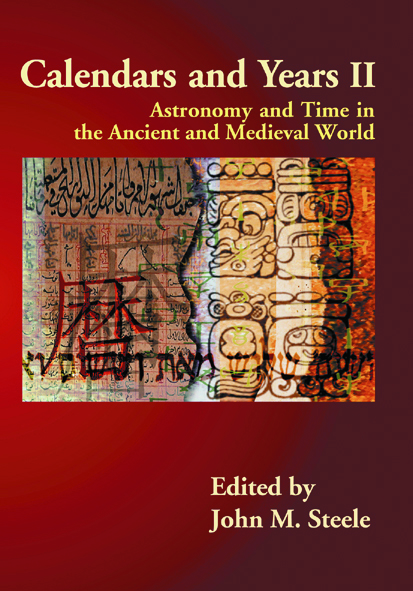
Research by UCSB Scholar Questions Accuracy of Maya Calendar Correlation, 2012 Prophecy, and Other Historical Dates

For nearly half a century, Maya scholars have relied on a fixed numerical value called the GMT constant as a means of correlating the dates on the ancient Maya calendar with those on the Gregorian –– or modern –– calendar.
Now, however, research conducted by Gerardo Aldana, associate professor of Chicana and Chicano Studies at UC Santa Barbara, suggests that the GMT constant –– which has never actually been proved conclusively –– could be inaccurate by 50 to 100 years, or more. Aldana's findings challenge the accepted Gregorian dates of all Classic Mayan historical events, as well as the end-of-the-world-as-we-know-it 2012 prophecies. His research is included in "Calendars and Years II: Astronomy and Time in the Ancient and Medieval World" (Oxbow Books, 2010), the second in a series edited by John Steele, associate professor of Egyptology and Ancient West Asian Studies at Brown University.
Aldana's research, in general, focuses on reconstructing Mayan astronomical practices, which for the most part can be recovered from their applications. Most of the data found in the archeological record amount to ritual events timed by astronomical phenomena; architecture oriented to observable astronomical events; or numerology tying together science, history, and religion with hieroglyphic inscriptions carved in stone.
"One of the principal complications is that there are really so few scholars who know the astronomy, the epigraphy, and the archeology," said Aldana. "Because there are so few people who are working on that, you get people who don't see the full scope of the problem. And because they don't see the full scope, they buy things they otherwise wouldn't. It's a fun problem."
For this article, however, Aldana turned the lens away from just the archaeological record to include a critical attention to the methods used by modern scholars to access the astronomical events viewed by ancient astronomers.
The GMT constant, which is based in part on astronomical events, is named for early Mayanists Joseph Goodman, Juan Martinez-Hernandez, and J. Eric S. Thompson. Each contributed to its calculation. "Goodman worked at the turn of the 20th century, and Martinez shortly thereafter," said Aldana. "Neither of them found much of a following because at the time, the work of Sylvanus Morley and Herbert Spinden was considered the strongest."
According to Aldana, the early work of Goodman, Martinez, Morley, and Spinden put heavy emphasis on the dates recovered from colonial documents written in Mayan languages and recorded in the Latin alphabet. "Thompson did a much more thorough job of addressing as much data as possible," Aldana said.
Aldana's article centers, for the most part, on the work of Floyd Lounsbury, an American linguist, anthropologist, and Mayanist scholar and epigrapher. Lounsbury examined the problem of the GMT constant by focusing on the data in the Dresden Codex Venus Table, a combination calendar and almanac that charts specific dates related to the movements of Venus.
"Astronomy had been considered in the past, but none had put the emphasis on the Venus Table as much as Lounsbury did," explained Aldana. "As I demonstrate in the article, he took the position that his work removed the last obstacle to fully accepting the GMT constant. Others took his work even further, suggesting that he had proven the GMT constant to be correct. Because of its convenience for specific types of research, et cetera, the acceptance of the GMT in scholarly circles today is very close to unanimous."
However, Aldana's review of Lounsbury's conclusions demonstrates that they are far from irrefutable. "This may not seem to be much, but what it does is destabilize the entire argument," he said. "If the Venus Table cannot be used to prove the GMT as Lounsbury suggests, its acceptance depends on the reliability of the corroborating data. The rest of the article historically unpacks each element of corroborating data to show that they are even less stable and/or persuasive than the Venus data. And the overall argument behind the GMT constant falls like a stack of cards."
Although he identifies the problems of the GMT constant, Aldana, who is not the first to question the calendar correlation, offers neither a solution nor a replacement. In line with the volume, his goal is simply to study the soundness of the arguments presented in support of –– and in opposition to –– the GMT constant and attempts others have made at identifying a solution. "A few scholars have stood up and said, ‘No, the GMT is wrong,'" said Aldana. "But in my opinion, what they've done is try to provide alternatives without looking at why the GMT is wrong in the first place."
A sound demonstration of the incorrectness of the GMT is a necessary first step in deriving a sound replacement, he said.
Related Links



